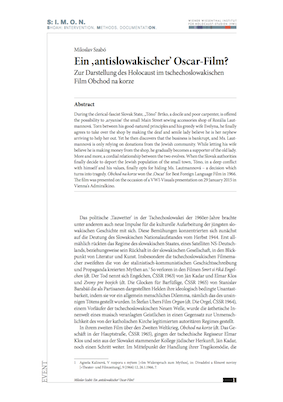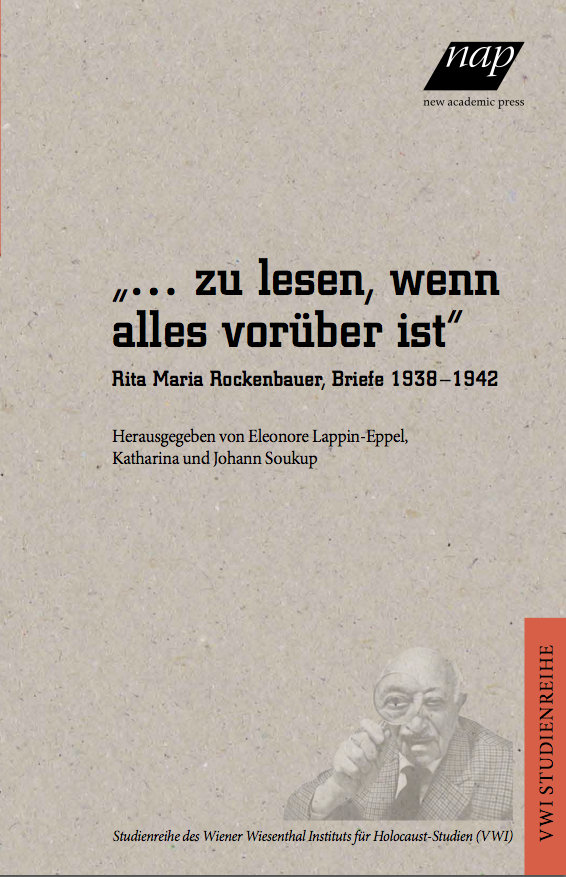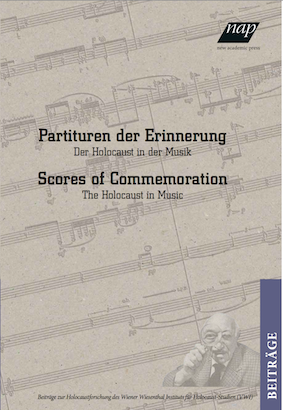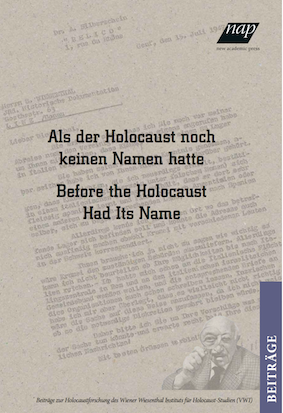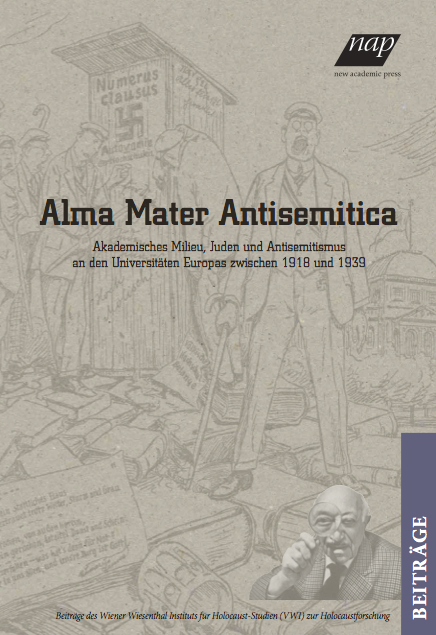Editorial
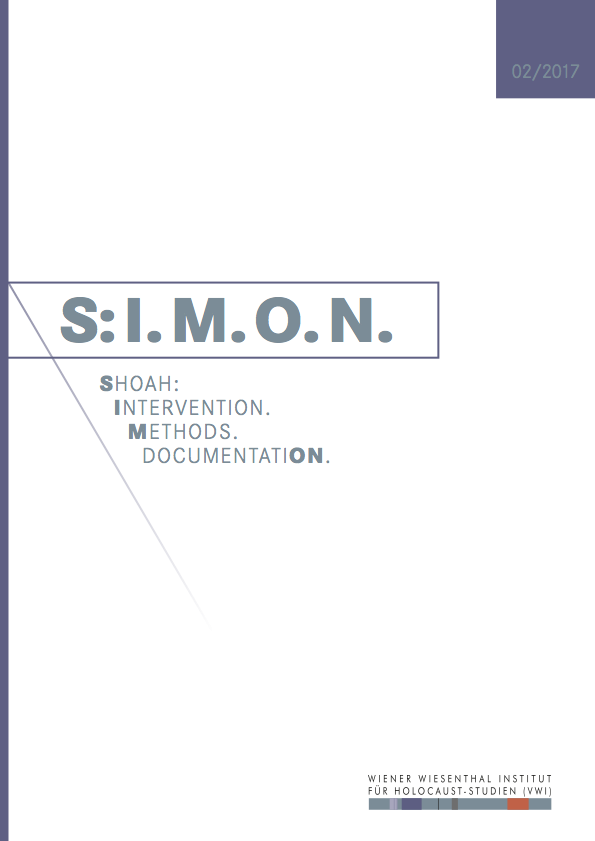 S:I.M.O.N. is an e-journal of the Vienna Wiesenthal Institute for Holocaust Studies (VWI). It appears twice a year in English and German language. S:I.M.O.N. aims at both a transnational and comparative history of the Holocaust and Jewish Studies in Central and Eastern Europe within the broader contexts of the European history of the 20th and 21st century, including its prehistory, consequences and legacies as well as the history of memory.
S:I.M.O.N. is an e-journal of the Vienna Wiesenthal Institute for Holocaust Studies (VWI). It appears twice a year in English and German language. S:I.M.O.N. aims at both a transnational and comparative history of the Holocaust and Jewish Studies in Central and Eastern Europe within the broader contexts of the European history of the 20th and 21st century, including its prehistory, consequences and legacies as well as the history of memory.
S:I.M.O.N. serves as a forum for discussion of various methodological approaches. The journal especially wishes to strengthen the exchange between researchers from different scientific communities and to integrate both the Jewish history and the history of the Holocaust into the different “national” narratives. It also lays a special emphasis on memory studies and the analysis of politics of memory. S:I.M.O.N. uses a double-blind review system, which means that both the reviewer’s and the author’s identities are concealed from each other hroughout the review process.
Shoah: The journal deals with the history of the Shoah from multidisciplinary, transnational and comparative perspectives. It seeks to integrate studies on Jews as well as on other groups of victims of the Holocaust, especially on Roma, and of so far less researched regions of (East) Central and (South) Eastern Europe.
Intervention. The journal reports on research projects and their transmission into public events. It also informs about current educational and remembrance programs.
Methods. The journal serves as a forum for the discussion of methodological approaches as, for instance, the everyday history, oral history, gender history, the history of violence, anti-Semitism and racism and the theory of memory and memory politics.
DocumentatiON. The journal contributes to critical approaches on using and interpreting archival materials in the 21st century.
Download the current issue S:I.M.O.N. 2017/2.
Die ungarische Zwangsarbeit in Wien, in den Jahren 1944/45, deren Spuren wir im Rahmen des Projekts „BEWEGT ERINNERN“ am 27. Mai 2014 freilegen wollten, ist eine Erinnerungsgeschichte, die innerhalb der Wiener Stadtgeschichte einen „blinden Fleck“ darstellt. Die Spuren dieser wichtigen Erinnerung offenbaren sich weder in der Stadtarchitektur noch im Stadtmobiliar auf eine lesbare Art und Weise, es existieren auch keine Erinnerungsorte, die unsere Aufmerksamkeit auf diesen Inhalt oder auf diese Identität lenken würden. Für die Wienerinnen und Wiener sind es womöglich Räume, welche in anderen Stadtgeschichten eine Rolle spielen, mit der betrachteten Epoche aber nicht mehr in Verbindung gebracht werden, da sie ja auch keine erkennbaren oder deutlichen „Zeichen“ oder „Spuren“ dieser Geschichte auf der Haut tragen. Aus diesem Grund ist es wichtig, eine Geschichte, eine Erinnerung, die sehr wohl noch besteht und präsent ist, auch wenn sie in der Textur der Stadt kaum mehr zu erkennen ist, wieder in die Erinnerung zu rufen, indem man an gewissen Orten dieser Geschichte gedenkt. Durch die Gedenkfahrt wurde also eine Veränderung des Stadtbildes angestrebt, indem Erinnerungsorte hinzugefügt wurden, um ein tieferes Verständnis von Räumen zu erlangen.
Die Idee einer Bustour durch Wien im Gedenken an ungarische Zwangsarbeiterinnen und Zwangsarbeiter 1944/45 bot die Gelegenheit, unsere, im Rahmen des Lehrgangs Social Design – Arts as Urban Innovation an der Universität für Angewandte Kunst theoretisch erarbeiteten Konzepte auch praktisch umzusetzen. Die Gedenktour wurde so zu einem Versuch, durch ein tieferes Verständnis von mental und real verschütteten und vergessenen Identitäten von Räumen, die individuelle Rekonstruktion eines Stadtbildes zu bewirken, indem wir diesem neue Erinnerungsorte hinzufügten. Es ging um einen Prozess, der eine persönliche Aneignung der Stadt und ihrer Identität anregt, aber auch umsetzt.
Booklet als PDF herunterladen





